The F-18 Fighter/Attack Jet: A Review
The F-18 Fighter Jet has become one of the most iconic military aircraft in history. It has been a supersonic, twin-engine, all-weather, multi-role combat aircraft since 1995. From its ability to conduct air-to-air and air-to-ground combat missions to its outstanding performance, the F-18 has earned its reputation as an incredibly capable fighter jet.
In this post, we will review the features, capabilities, and specifications of the F-18 and understand why it has become such a superior aircraft.
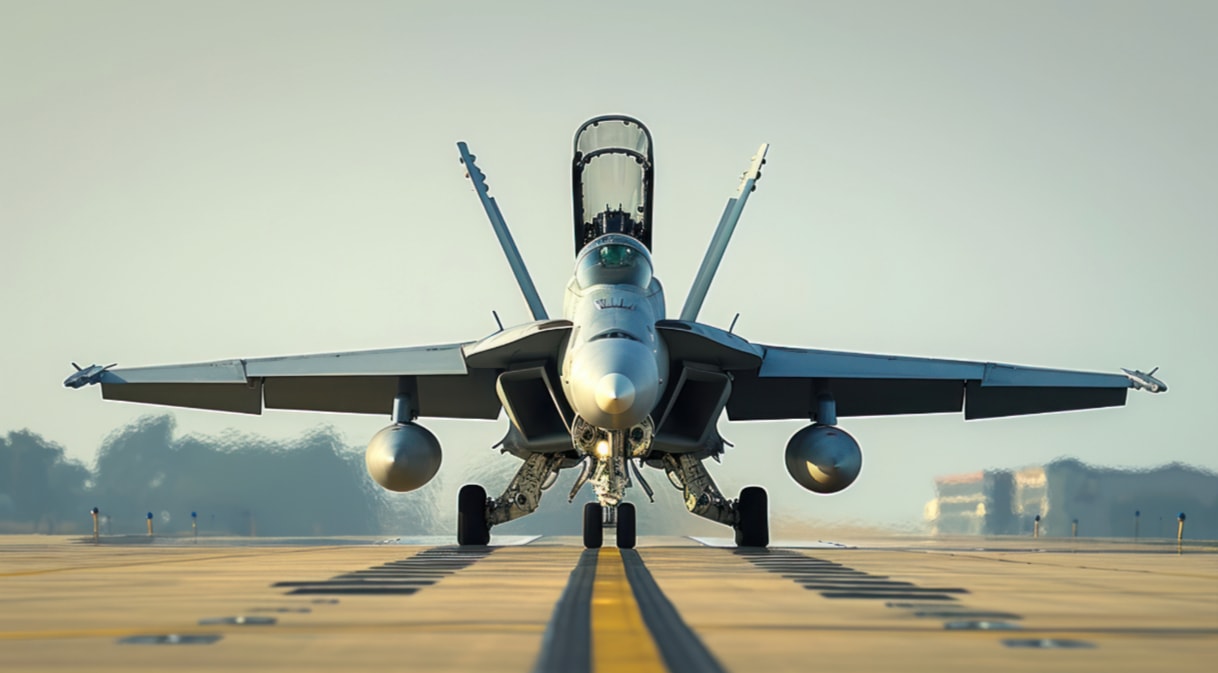
Variants
The F-18 Fighter jet has different variations. These versions are easy to identify when you look at the features. You can easily identify when you look at the following:
-
Availability of Wing fences
-
The number of seats
-
The size of the F-18 fighter jet
-
The shape of its air intakes
-
Number of external antennas present on nose and tail
-
Lending edge extensions shape
Here is a list of the F-18 Fighter Jets:

The F/A-18A Hornet
This is the first version of an F-18 fighter jet. It is a single-seat aircraft. Some distinguishing features include oval air intake (O-shaped) under its wings. It has an S shape on the leading edge extensions. Using the features, you can quickly identify this old model of the F-18 fighter jet.
However, you can recognize the original A model and the C upgrades through its external antenna bumps. Each nose has one antenna and three at the top of each vertical stabilizer.
When Spain bought this version, it was designated EF-18A, while Canada was designated CF-188A.
The F/A-18A+ Hornet
The F/A-18A+ Hornet is a variant of the F-18 series that was designed to be an improved version of the F/A-18A Hornet. It features many upgrades over its predecessor. These improvements include increased range and weapons carrying capacity, an upgraded avionics system, and more powerful engines.
The F/A-18A+ Hornet has a more extended range than the F/A-18A, allowing it to fly further and engage targets with greater accuracy. In addition to its upgraded systems, it is easy to recognize it from its predecessor. This is because it has four blade antennas on top of the nose.
The F/A-18B Hornet
This jet fighter is an upgraded version of F/A-18A. However, it has two seats. The rest of the features are externally similar. The same version in Canada is referred to as CF-188B and EF-18B in Spain.
The F/A-18C Hornet
The many grades in a single block led to the birth of F/A-18C. The jet fighter is externally the same size as F/A-18A. However, there are significant differences like avionics, radar, and ability to launch missiles.
You can easily recognize this model from the outside. It has two additional antenna bumps and two additional bumps on its nose. You will also note that there are no antennas under the intakes.
The F/A-18D Hornet
This fighter jet is similar to the F/A-18C and one of the two-seat versions. If you want to spot the difference, look for its long canopy and antenna differences.
The fighter jet is also fitted Advanced Tactical Airborne Reconnaissance System, which is a camera nose. The ATARS replaces the cannon’s space.
The F/A-18E Super Hornet
This fighter jet is designated as F/A-18, although it is an E model, which differs from the original fighter jets A and C.
The first difference you will note is that this jet is bigger than others, like 25% more, which makes it referred to as Super Hornet. Another thing is its rectangular air intake; they make it easy for you to identify it.
The wing fences on top of the intakes are no longer anymore, as there are many antenna bumps. Lastly, you will find lending edge extensions with a different shapes. They lack an S curve and are also wider.
How the Super Hornet Stays Ahead in Modern Combat
One of the standout qualities of the Super Hornet is how well it adapts to modern threats and the ever-changing world of aerial warfare. This flexibility comes from a clever design—its airframe was intentionally built to welcome upgrades, making it much easier to integrate cutting-edge technology as it becomes available.
Over the years, the Super Hornet has evolved through various "blocks" or upgrade packages. Each new version brings improvements that help it keep pace with both current and emerging adversaries.
- Block II Updates: These upgrades brought major advancements, like switching to an Active Electronically Scanned Array (AESA) radar. This radar offers sharper detail and better tracking of enemy targets. Enhanced avionics and longer operational range also made their debut, along with the ability to carry and launch a wider array of precision-guided weapons.
- Block III Enhancements: In this latest round, the Super Hornet takes durability and stealth up a notch. Its airframe now lasts up to 10,000 flight hours, and tweaks to its design help it avoid enemy radar more effectively. Inside the cockpit, pilots are greeted by a modern, touchscreen display system, pulling real-time data from systems like the Distributed Targeting Processor Network, allowing for smarter, faster decisions during missions.
- Future-Proofing: With each upgrade, fresh sensors and stronger computing muscle are added, ensuring the Super Hornet isn’t just keeping up—it’s prepared to leap into the future of combat. As threats evolve, new blocks can be developed and installed, keeping the aircraft at the cutting edge.
In short, it’s this upgrade-friendly approach, much like a smartphone that gets regular system updates, that lets the Super Hornet remain a formidable force—no matter how the skies change.
The F/A-18E/F Block III Super Hornet
Building upon the improvements of the earlier Super Hornet, the latest Block III upgrade takes this jet to a new level with several notable advancements.
First, Block III enhances the overall lifespan of the airframe, allowing it to stay in service for more flight hours—up to 10,000. You’ll also notice some subtle tweaks in its design aimed at reducing its radar signature, making it even harder for enemy sensors to spot.
Inside the cockpit, pilots now benefit from cutting-edge avionics. The most eye-catching upgrade is a large touchscreen display, which streamlines the interface and improves how pilots interact with onboard systems. This upgrade isn’t just a fancy screen; it integrates new data-sharing technologies that allow pilots to see a complete tactical picture in real time.
Additionally, Block III introduces powerful networking capabilities thanks to advanced processors. These new systems make it easier for the Super Hornet to connect with other aircraft and ground forces, ensuring seamless information-sharing during complex missions.
In summary, the Block III Super Hornet stands out with:
- An extended service life
- Reduced detectability by radar
- A next-generation touchscreen cockpit
- Enhanced digital networking for better situational awareness
These upgrades keep the Super Hornet highly competitive and mission-ready for the modern battlefield.
The F/A-18F Super Hornet
This model is an advanced version of the older version F/A-18E. However, like F/A-18B and F/A-18D, it is a two-seat training version. The back seat of this model has been occupied by an advanced weapon systems officer and not the instructor.
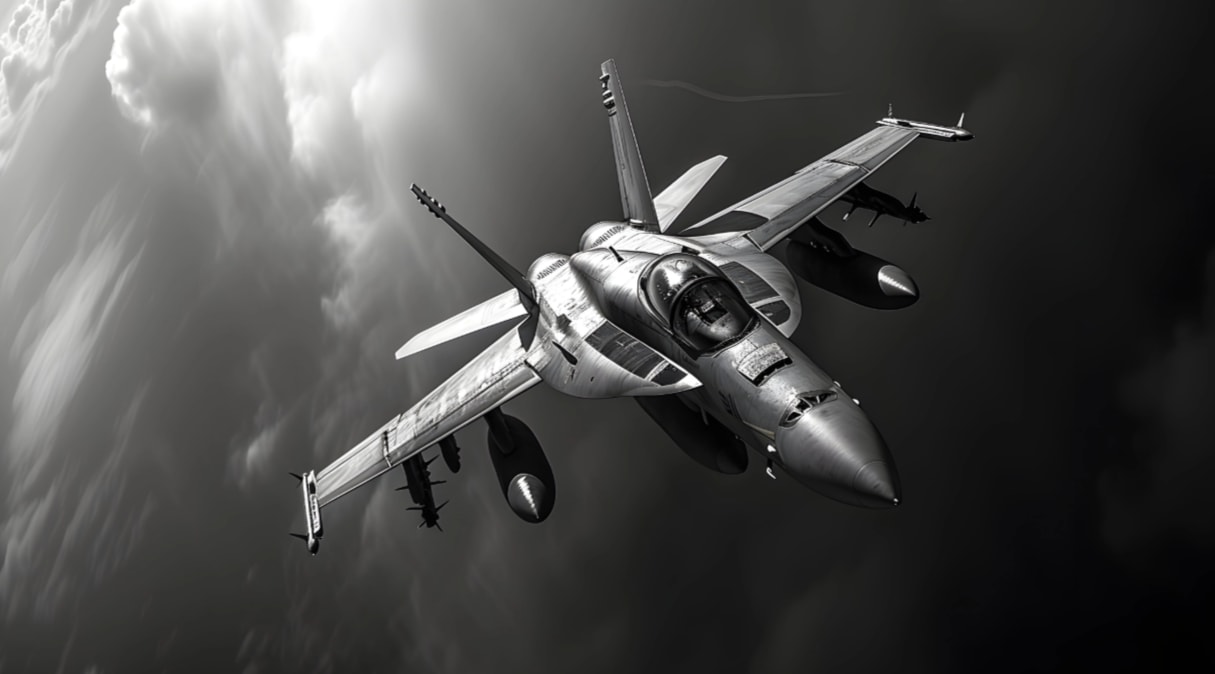
The F/A-18F Super Hornet replaced the F-14 Tomcat. It also has similar external characteristics to the F/A-18E model. But the canopy is longer.
The EA-18G Growler
After Super Hornet, we came to the Growler model. Previously, the Super Hornet replaced the A-6 Intruder, F-14 Tomcat, A-7 Corsair, S-3 Viking, and the EA-6B Prowler models. And that could be the reason why EA-18G received a similar name — the Growler. However, in practice, this model is referred to as Grizzy so that it can avoid confusion.
Like the F/A-18F, the Growler is externally large. However, it has jamming pods located under the wings and at the wing tips. You will also find a plate on the nose where the cannon is in Hornets.
Boeing wanted to add stability to this jet fighter. So, it worked on aerodynamic improvements. And in this model, the wing fences are the most prominent. It also focused on other modifications, such as strips and leading edges.
The EF-18M
This is an upgraded EF-18As. In Spain, they are similar to F/A-18C. However, they differ from the F/A-18A+ os, based in the US Navy. This is because they lack four plate antennas located in front of their canopy. However, a second antenna bump is located on the side of its nose — above the existing one.
The Mission
It is a versatile, powerful, and reliable aircraft that can handle a wide range of missions. The design allows it to function in two ways:
● As a fighter jet
A fighter jet is an aircraft designed for air-to-air combat. Fighter jets are typically used to intercept and engage enemy aircraft and can be used for offensive or defensive purposes. They are also sometimes used in supporting roles, such as providing reconnaissance.
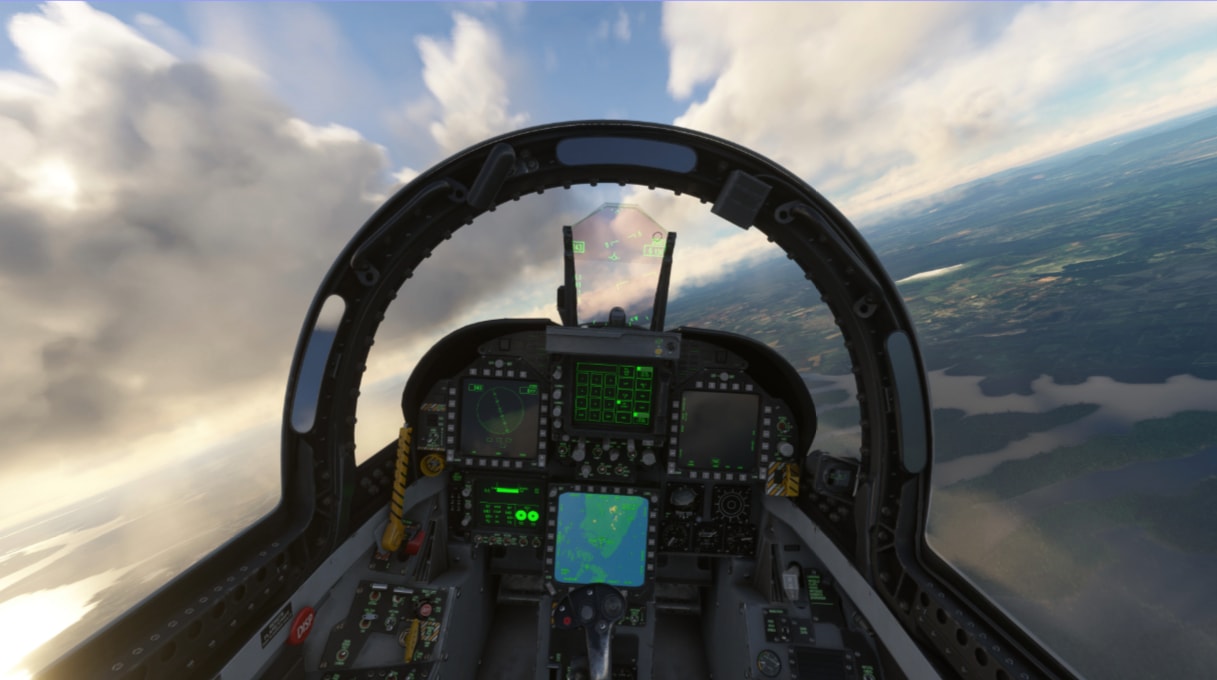
Fighter jets are highly maneuverable and can reach higher speeds. They are equipped with advanced avionics and weaponry, including guided missiles.
● As an attack jet
An attack jet is an aircraft designed for close air support and ground attack missions. Attack jets are typically equipped with air-to-ground missiles, bombs, and other weapons to conduct operations against enemy forces on the ground.
Attack jets are typically slower and less maneuverable than fighter jets, but their armament allows them to engage targets from a greater distance. Attack jets are also equipped with advanced avionics and navigation systems, allowing them to fly autonomously or with minimal human input.
However, the F-18 fighter jet is designed to fit both roles. It can act as a fighter jet or an attack jet. Some features allow it to perform excellently in both roles. These include;
Collection of stations: The jet has storage areas located on the wings and belly. These storages can carry anything needed in a war — including tactical nuclear bombs and extra fuel tanks. When these stations are loaded with different components, the F-18 turns to a different plane.
High Performance: The other major secret is the high-performance standards for this jet. This is because it has impressive engineering, which makes it better than other aircraft.
Its maneuverability gives it an advantage over other jets in fights. It allows it to outmaneuver the enemy and gain a tactical advantage. It is also equipped with an array of advanced avionics and electronic systems, allowing it to fly at lower altitudes and deliver precise weapons strikes. Additionally, its high speed makes it difficult for adversaries to intercept or track it.
Under the Hood
Hornets perform and operate like other jet planes. They have powerful turbine engines that create thrust. The two broad wings will then create lift. However, rear fins stabilize the aircraft, and rudders allow the jet to turn. And when the pilot wants to slow down, they will use an air brake.
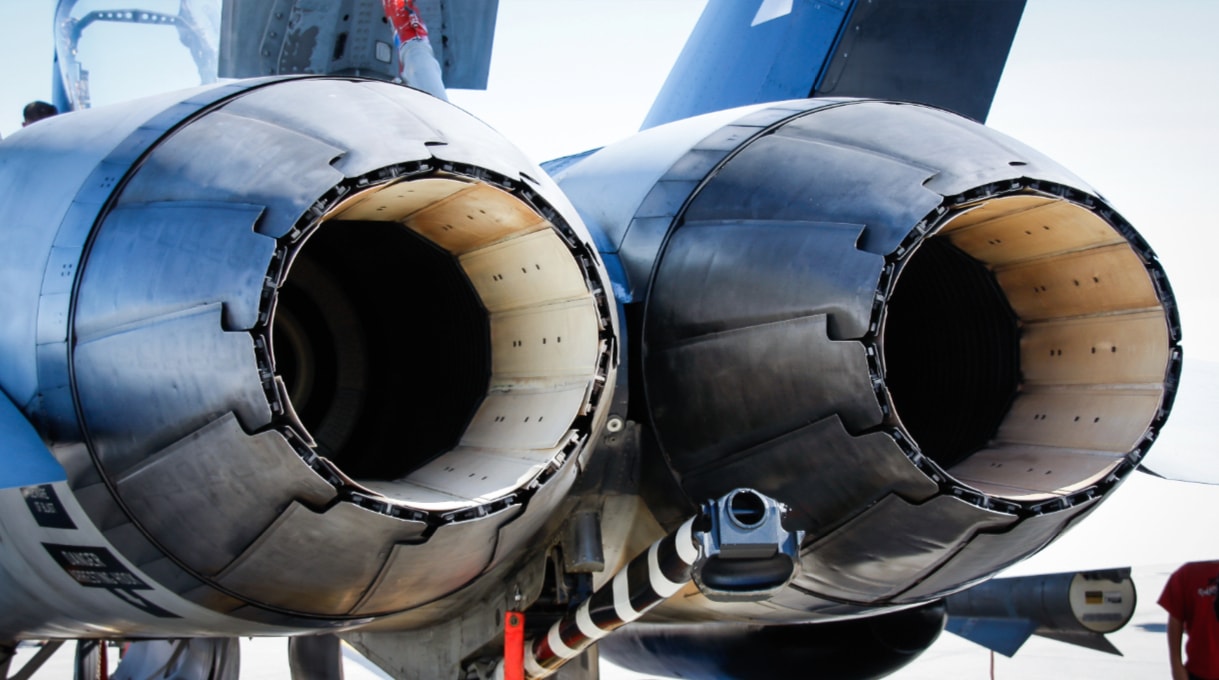
In addition, they have two engines F414-GE-400 which can give a static thrust of 22,000 pounds (9,977 kg) each. It can also reach a speed of 563 meters per second (Mach 1.7) and fly up to 11,000 meters ( 36,089 feet).
The engine afterburners will provide a powerful thrust to help this F/A-18 attack the enemy and escape quickly. Afterburner will inject fuel into its jet exhaust to ignite it. The combustion boosts the speed of the jet.
Inside Cockpit
The F/A-18 fighter jet has advanced gadgetry inside the cockpit. Together with avionics software, this equipment provides the pilot with everything needed to be on top of things — even during the hairiest situation.
In addition, the interface of the features is laid intuitively, which enables easier operation.
Here are some of the features include:
-
Raster heads-up display (HUD)
-
Digital color moving map
-
NAVFLIR
-
Night vision goggles
-
Hughes ATFLIR infrared radar pod
-
Independent multipurpose color display
-
Special cockpit lighting used with night vision
Mission Systems and Avionics: Brainpower for Any Battle
The secret sauce enabling the F/A-18 Super Hornet to stay ahead of threats is its smart mission systems and ever-evolving avionics. Think of the Super Hornet as a flying Swiss Army knife: it’s designed to easily adopt new tools and upgrades as technology leaps forward.
At the heart of its adaptability is an open architecture—basically, a modular “plug and play” setup. Engineers can drop in new electronics, sensors, or weapons without needing to rebuild the whole jet from scratch. This means the Super Hornet can swiftly roll out the latest upgrades, ensuring it always keeps pace with whatever its adversaries throw its way.
Major leaps came with the jump to Block II, which added next-gen radar and sensors, boosting both range and the ability to strike with pin-point accuracy. If Block II made the jet smarter, Block III dialed everything up further:
- Longer Lifespan: The upgraded airframe can handle more flying hours, keeping jets in the air and ready for action for longer.
- Stealthier Profile: Improvements reduce the radar signature, making the Super Hornet harder to spot.
- Advanced Cockpit: Say goodbye to old-school dials and switches. Pilots get panoramic touchscreen displays—think giant tablets with all mission info at their fingertips.
- Turbocharged Computing: The brainpower under the hood gets a boost from super-fast processors and an expansive network, so pilots have a real-time “common tactical picture”—sharing critical data with wingmen and command centers instantly.
The result? Pilots have unparalleled situational awareness, faster reaction times, and the flexibility to handle whatever their mission throws at them—whether that’s dogfighting, close air support, or precision strikes deep behind enemy lines.
Weapons
F/A-18 is a war jet, so it has some powerful features. The aircraft carries different types of weapons into battle.
In addition to the ordnance, this jet also defends itself using the powerful M61A2 Vulcan, which is a 20 mm and 6-barrel rotary cannon. It is mounted inside its nose, which is hydraulically driven and electrically fired. Operators have to choose the rates of fire, either 4000 or 6000 rounds/minute.
It also has a cooling system used to prevent the melting of the barrel while spewing out the hot lead. The firing is done to ground targets and enemy aircraft with PGU series electrically-primed rounds or 20mm linkless M-50.
How Hornets Were Developed
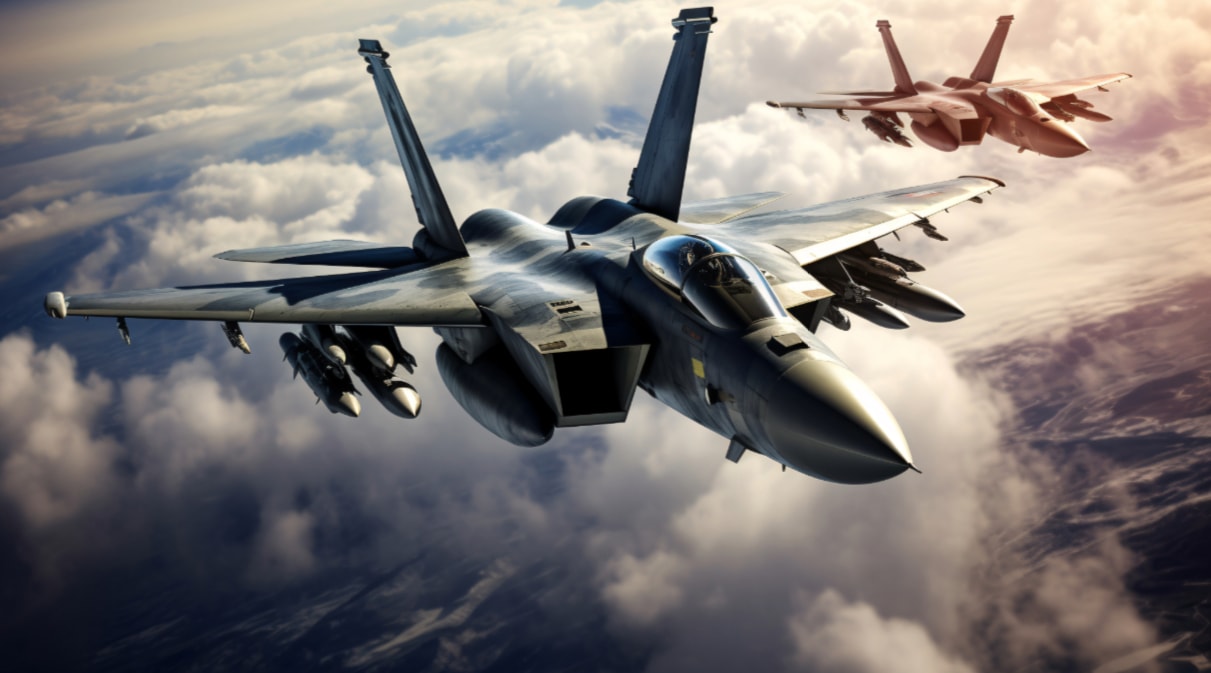
Around the 1970s, Congress allowed the Navy to create a new combat fighter. The jet was to incorporate the newest technology during that time. However, they were on a budget after Congress set a limitation and wanted the new craft design to look like F-16 or F-17.
Unfortunately, these crafts had only been designed only to take off from an airstrip. However, a combat fighter for the Navy should be deployed from an aircraft carrier. So, it was a big challenge that brought together several competing defense contractors to create the new craft.
The discussion continued until 1976, when they officially decided to choose the F/A-18. And in 1983, the F/A-18 was fully integrated.
Some significant contributors were Northrop Grumman, McDonnell Douglas Aerospace, and Boeing. They worked together and created the Hornet’s airframe — this was the body frame of the craft, wings, flight control surfaces, and more.
The engines were designed by General Electric, a company responsible for light bulbs and everything else, including dishwashers. The radar equipment was provided by Hughes, the communication contractor.
Key Milestones in Super Hornet History
The journey from the original Hornet to the modern Super Hornet reads like a tale of relentless tinkering, reimagining, and a hearty dose of Navy persistence. The Super Hornet’s story kicked off in the mid-1990s, when the need arose for a beefed-up successor to the legendary F-14 Tomcat—think a Hornet but with a gym membership and a few new gadgets.
By 1995, the first models—distinguished as the single-seat “E” and the two-seat “F”—were ready for the hangar. After plenty of ground checks and fine-tuning, real-world action wasn’t far behind. In 2002, the Super Hornet was launched from the deck of the USS Abraham Lincoln for its maiden cruise, quickly proving its worth in patrols and strike missions over Iraq.
A big step forward came with the Block II upgrade in the early 2000s. This round of improvements turned the Super Hornet into the backbone of naval aviation, with updated tech and smarter systems keeping it relevant season after season. By 2020, the last of these Block II jets rolled off the production line—just in time for the next leap in innovation.
Enter Block III, the latest version loaded with upgrades. We're talking a longer service life, more operational range, an ultra-modern cockpit, and even a touch of stealth. By the summer of 2020, the first Block III test jets were in the Navy’s hands, ready for evaluation and setting the stage for a fresh fleet of over 70 new birds through 2024.
The Super Hornet’s impact isn’t just combat—it's taken pride of place in the famed Blue Angels demonstration team, showcasing its agility and raw power at airshows since their transition from the original Hornet lineup in 2020.
The FA-18 Super Hornet Statistics
This fighter jet has among the most appreciated statistics in history. From impressive performance and high speed, this F-18 Jet may not retire soon. No one would like a monster of an aircraft to retire.
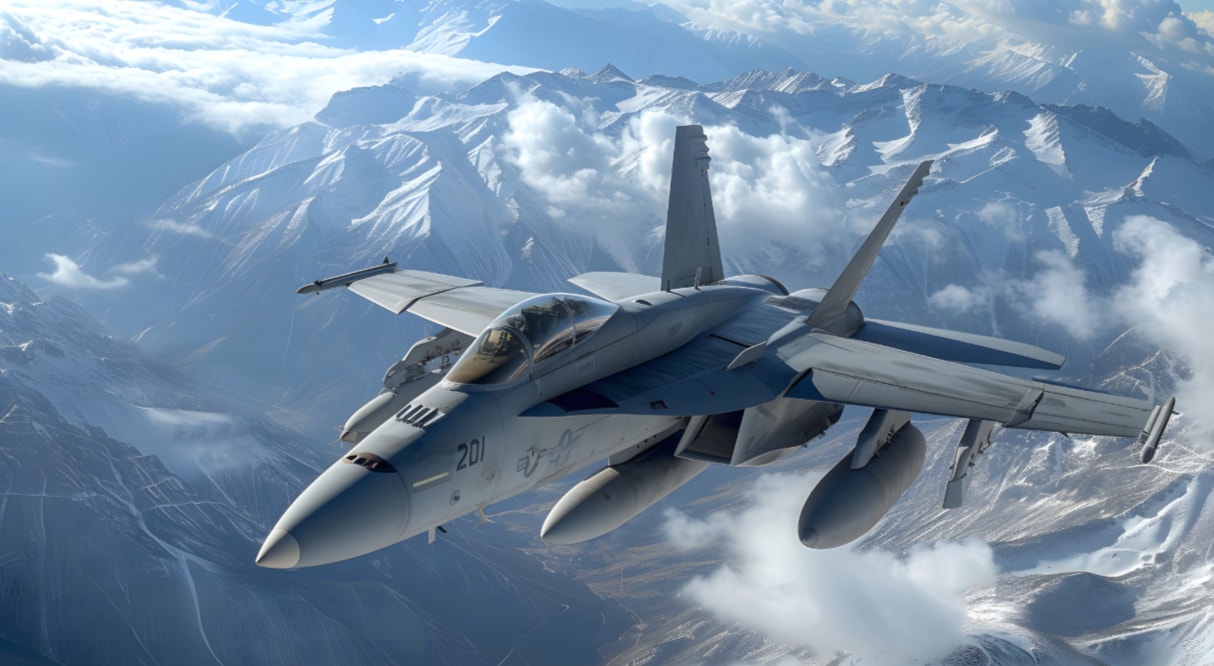
Here are the statistics of this close air support fighter jet:
Speed: 1,190 mph at 40,000 ft
Combat Range: 449 mi. It also has two AIM-9s and four 1,000-pound bombs
Range: 1,458 mi
Service Ceiling: 50,000 ft
Rate of Climb: 44,882 ft/min
Different Bombs
-
CBU-78 Gator mine system
-
Mk 80 series unguided bombs
-
JDAM bombs
-
Paveway series laser-guided bombs
Why the Super Hornet’s Open Mission Systems Architecture Matters
One of the standout features of the Super Hornet is its open mission systems architecture. But why is this important? Put simply, it means the aircraft was designed from the ground up with flexibility in mind. Thanks to this open design, new weapons, sensors, and technology upgrades can be integrated quickly and efficiently—much like swapping out parts in a high-end gaming PC rather than a locked-down tablet.
This flexible backbone has allowed the Super Hornet to keep pace with evolving threats and mission requirements. As technology advances, so does the Super Hornet. Whether it’s adding next-generation electronic warfare systems, smarter targeting pods, or the latest in navigation tech, the open architecture ensures these upgrades are not only possible but efficient to implement.
What does this mean in real terms? The Super Hornet can be continuously updated without needing a complete redesign. Its adaptability is much like that of a Swiss Army knife—ready to handle whatever new challenge comes its way, ensuring it remains a formidable presence in the skies for years to come.
Different Missiles
-
AIM-7 Sparrows, which are medium-range air missiles
-
AIM-120 AMRAAM, which are medium-range air missiles
-
AIM-9 Sidewinder, which is short-range air missiles
-
AGM-65E/F Maverick, which is air-to-ground missiles
The list above is not comprehensive about this F-18 fighter jet. We have only listed what the aircraft can carry. But the amazing thing, it can quickly take off, even from ships, and easily drop bombs before it returns.
Hornets in Action
Since the jet fighters are developed with a purpose, they have shown impressive action. They have been in service for a long time. One of the actions was during the Operation Desert Storm.
In 1991, a war broke out in Iraq where the Hornets were used for a trial by fire. They used two F/A-18s that were fitted with 2,000-pound bombs. Each carried four such bombs, but they were intercepted by MiG fighter jets. The two aircraft shot the two MiG jets and completed their bombing mission.
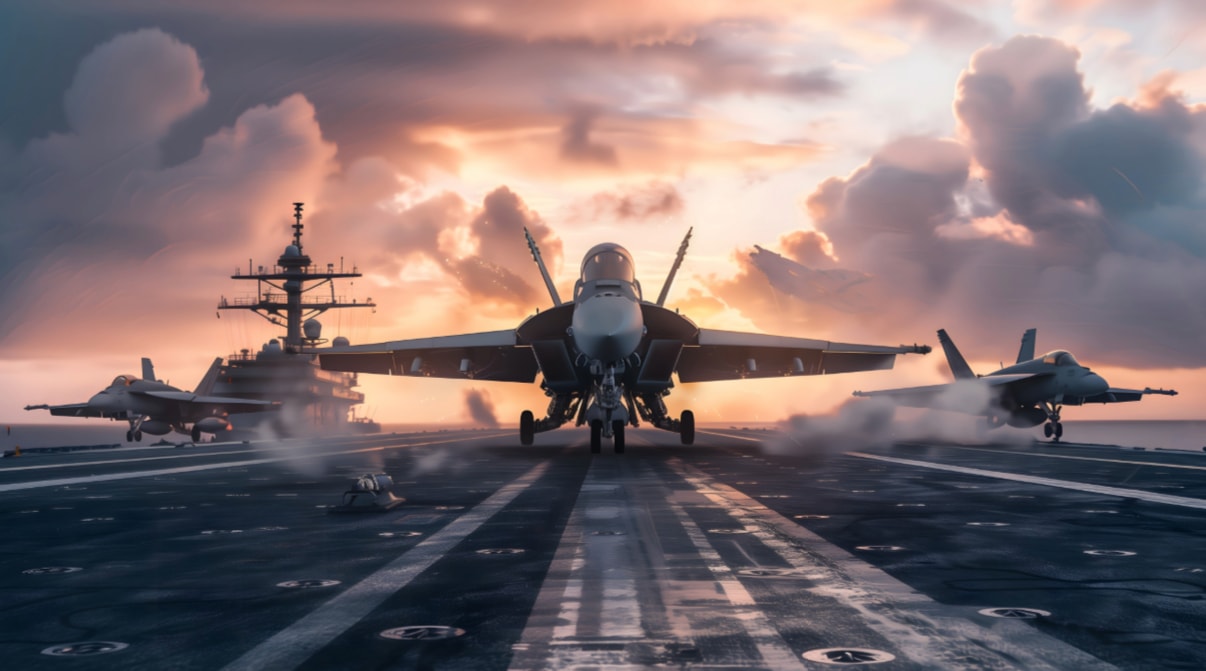
Super Hornet Price Tag
If you’re wondering about the price, the unit cost for a Super Hornet is approximately $67.4 million as of Fiscal Year 2021. Of course, this price can vary with configuration, upgrades, and any extra bells and whistles, but that’s the ballpark figure you’d expect for a brand-new jet off the production line.
Conclusion
Since its introduction, the F/A-18 has become one of the most successful combat aircraft in history. It has served in several military operations. The Hornet also serves with the air forces of several nations around the world, including Canada, Australia, Kuwait, Spain, Switzerland, Malaysia, and Finland.







